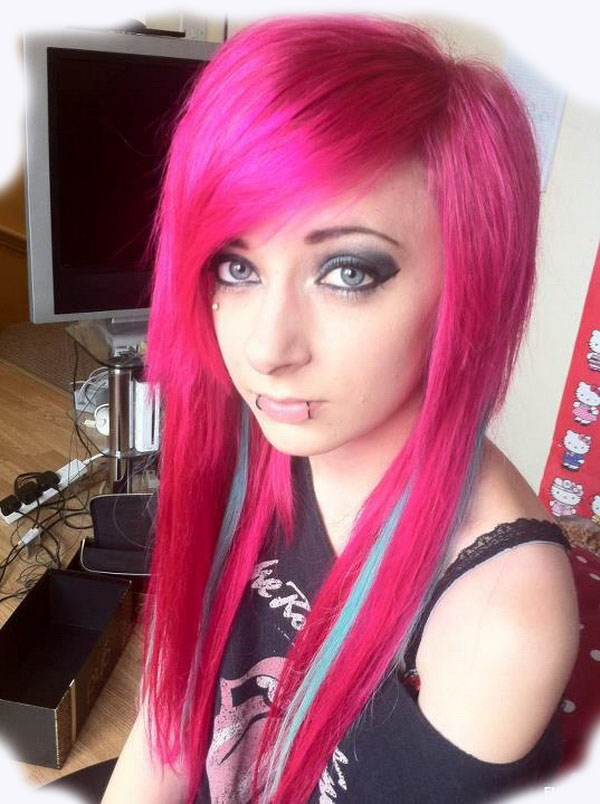Emo hair has become more than just a hairstyle; it represents a cultural phenomenon that defines a generation. This distinctive look emerged from the emo music scene in the early 2000s, reflecting the emotional depth and individuality of its followers. With its edgy cuts and bold colors, emo hair allows individuals to express their feelings, beliefs, and identities, making it a popular choice among those who embrace the alternative lifestyle.
As the emo subculture evolved, so did the hairstyles associated with it. From long, sweeping bangs to vibrant hues, emo hair has taken on various forms, each representing a unique aspect of the wearer’s personality. Many fans of the style have adopted it as a form of rebellion against societal norms, turning their hair into a canvas for self-expression and creativity.
The versatility of emo hair has contributed to its longevity in the fashion world. Today, it continues to inspire new trends and styles, influencing not just music and art but also mainstream fashion. In this article, we will explore the history, key styles, and the cultural significance of emo hair, as well as provide tips for achieving the perfect emo look.
What are the Key Characteristics of Emo Hair?
Emo hair is known for its distinctive features, which include:
- Long, side-swept bangs
- Asymmetrical cuts
- Layered textures
- Bold colors, often with dramatic contrasts
- Choppy or spiky styles
Who are the Influential Figures Behind Emo Hair?
When discussing emo hair, several influential figures come to mind. Artists and musicians who embraced this style helped popularize it within the emo subculture.
Biography of a Key Influencer: My Chemical Romance
My Chemical Romance (MCR) is often credited with bringing emo hair into the mainstream. Their lead vocalist, Gerard Way, became an icon of the emo movement, inspiring countless fans to adopt similar hairstyles.
| Name | Gerard Way |
|---|---|
| Born | April 9, 1977 |
| Band Formation | 2001 |
| Notable Albums | The Black Parade, Three Cheers for Sweet Revenge |
| Influence | Emo culture and fashion |
How Has Emo Hair Evolved Over the Years?
Initially characterized by its dramatic, spiky bangs and dark colors, emo hair has undergone significant transformations. As the subculture gained traction, new variations emerged:
- **Scene Hair**: A more colorful and exaggerated version of emo hair, often featuring bright highlights and extreme volume.
- **Soft Emo**: A subtler approach, where softer colors and less extreme hairstyles became popular while still retaining the essence of emo.
What Hair Products Are Essential for Emo Hair?
To achieve the perfect emo hair, certain products are essential. Here are some must-haves:
- **Hair Gel or Mousse**: For adding volume and texture.
- **Coloring Products**: If opting for vibrant colors, invest in quality hair dyes.
- **Heat Protectant Spray**: To protect hair from damage while styling.
- **Hair Spray**: For holding the final look in place.
What Are Some Popular Emo Hair Styles?
Several iconic emo hair styles have emerged over the years. Some popular choices include:
- **The Classic Emo Cut**: Long, layered hair with side-swept bangs.
- **Choppy Bob**: A shorter, more manageable style that retains the emo aesthetic.
- **Undercut Emo**: A bold choice, featuring shaved sides with longer hair on top.
How to Maintain Emo Hair?
Maintaining emo hair requires dedication. Here are some tips to keep your look fresh:
- **Regular Trims**: To maintain the shape and style.
- **Deep Conditioning Treatments**: To keep colored hair healthy and vibrant.
- **Avoiding Heat Damage**: Limit the use of heat-styling tools.
Is Emo Hair Suitable for Everyone?
While emo hair is often associated with a specific subculture, it can be adapted to suit various styles and preferences. Whether you choose to embrace the bold colors or keep it subtle, emo hair can be a great way to express your individuality.
Conclusion: The Enduring Appeal of Emo Hair
Emo hair has remained a powerful form of self-expression for many. With its rich history and continuous evolution, it reflects not only personal style but also a deeper connection to the emotions and experiences of those who wear it. Embracing emo hair can be an empowering journey, allowing individuals to showcase their true selves and connect with a community that values authenticity and creativity.
Exploring The Life And Legacy Of Juliette Vann
Kylayese: The Rising Star Of Contemporary Art
Unraveling The Mystique Of The Corgi Tail

.jpg)
